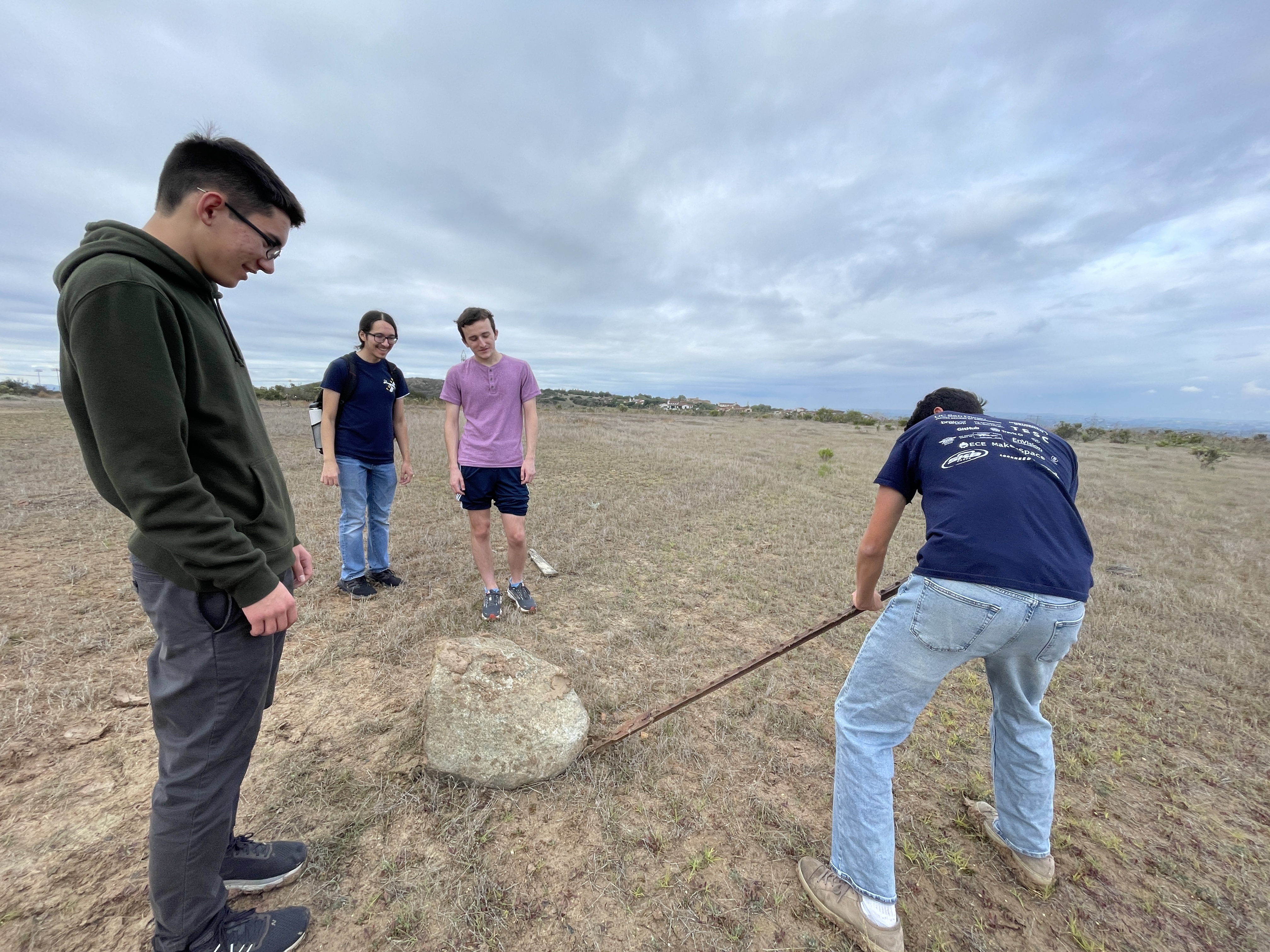Hey everyone! The Triton UAS team has been busy this fall building a new plane, hosting workshops, and welcoming new members! Details 👇
✈️ Our airframe team, led by Thomas Dolby, Brandon Vinh, and David Nielsen, has been building a new airplane from scratch and teaching new members along the way. The onboarding aircraft project gives new members hands-on experience with composite manufacturing, principles of aerospace design, and teamwork.
⚡Our embedded team, led by Alejandro Martinez, Cody Rupp, and Kyle Jacob, has hosted multiple successful workshops ranging from PCB design to communication protocols. The team is now working on signals and power distribution boards for our aircraft.
💻Our software team, led by Anthony Tarbinian and Tyler Lentz, has been hard at work refactoring the code on our flight computer to C++, training new team members, and improving our computer vision pipeline. By the end of the quarter, the team will have our critical flight systems benchmarked and deployed.
💸Our business team, led by Sherry Tao and Ben Garofalo, has been organizing fundraisers, planning social events and gathering corporate sponsorships. Their efforts have been vital in fostering a welcoming and productive environment that enables the club to succeed.
Airframe
Over the first 5 weeks of the fall quarter the airframe subteam has made continuous progress on our onboarding aircraft fabrication. We designed the onboarding aircraft so that it would be ready for manufacture in the Fall and allow for new members to quickly grasp engineering skills and concepts starting day one.
New members have gotten hands-on experience with composite manufacturing and aircraft design as they work as a team to construct the fuselage, wings, and structural components of the onboarding aircraft from scratch. All of these skills that they are developing will allow them to meaningfully contribute and take responsibility for critical components of our final competition aircraft. On top of training new members, the onboarding aircraft is designed to be a fully capable UAV that we can use in the future for flight testing of software, electronics, or mechanical subsystems.
Looking ahead, we are going to be finishing up the onboarding aircraft by December to allow for an inaugural flight before our finals arrive.
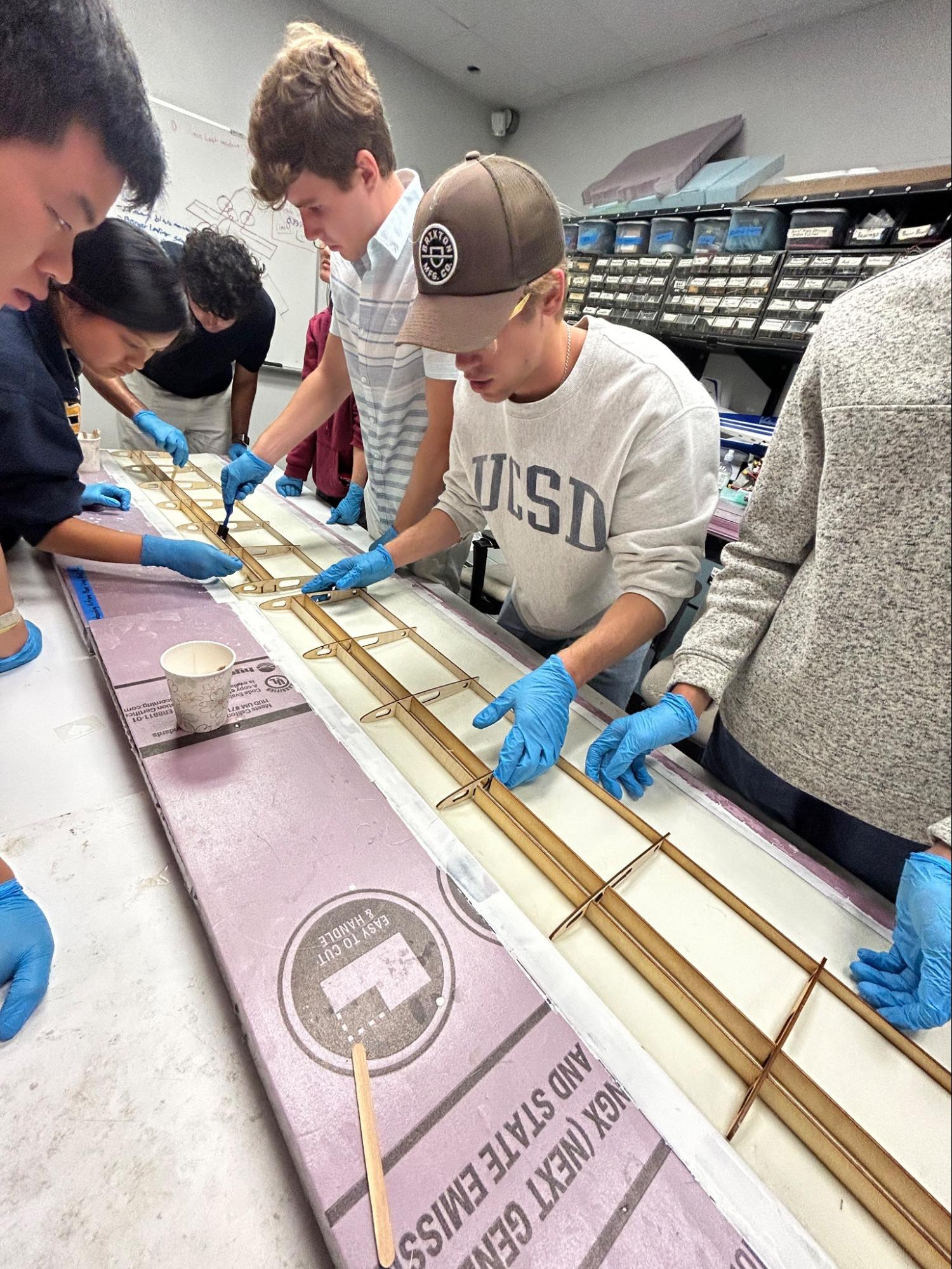
Embedded
During the first half of the quarter, the Embedded team has been busy integrating new members by giving workshops and starting tasks in each project. The workshops focused on teaching the basics of essential electronics skills such as PCB Design, Arduino programming, and soldering/wire crimping, as well as more specialized knowledge including the MAVLink protocol and the layout of our plane’s electronics.
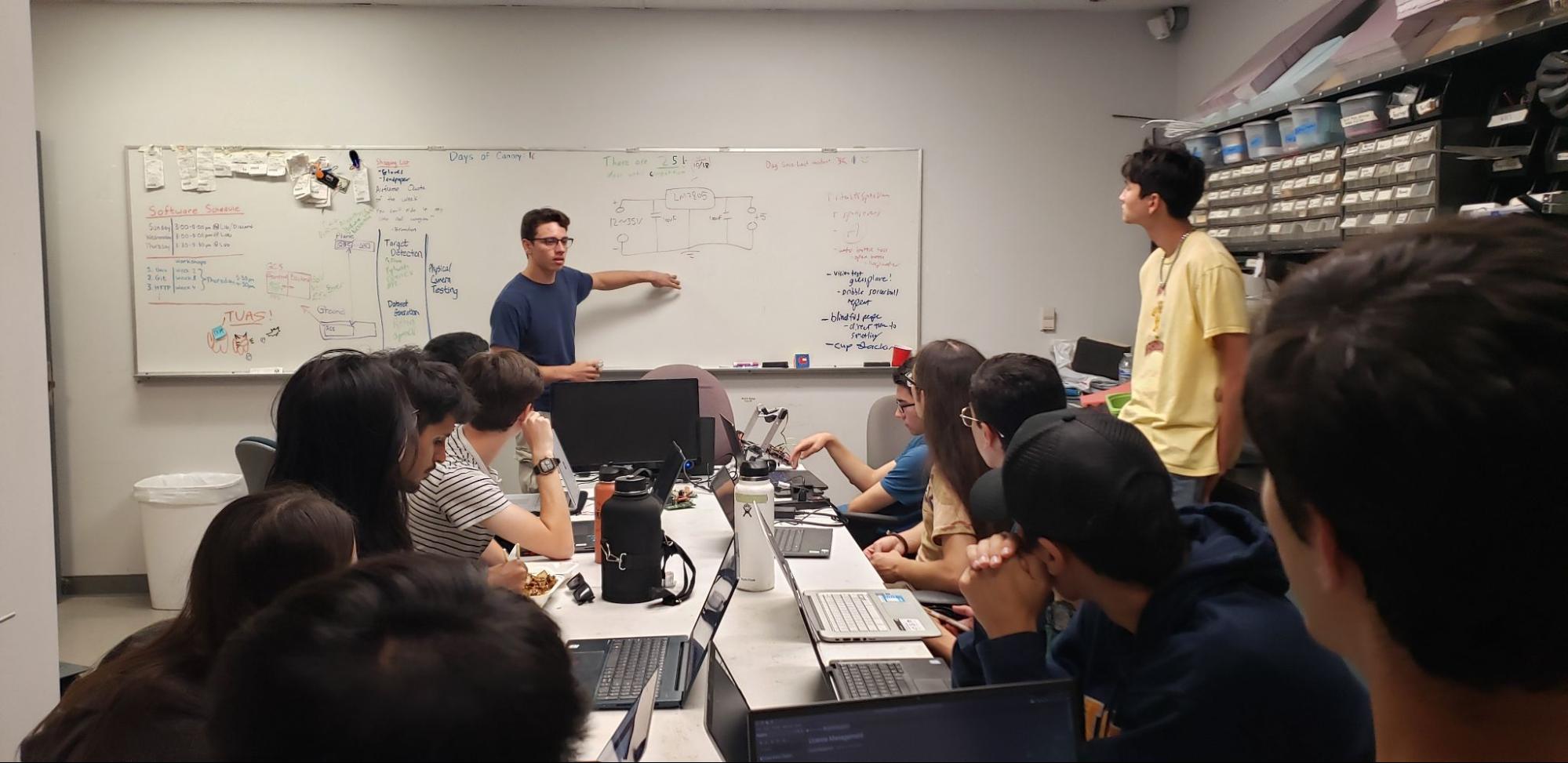
After these workshops, each member was given the choice of a project to work on, and then they were assigned a task that would allow them to apply the experience they gained during the workshops.
For the signals board onboarding project, members have been tasked with adding two more thermistors to the signals board. This involves many of the skills used by the embedded team, namely soldering, working with electronics, Arduino programming, and writing C with the MAVLink library. It is on track to being completed and by the end of the quarter we expect to have members starting work on this year’s goal of reporting the ESC’s current to the ground control station during flight, as well as future-proofing the signals board by looking into CAN bus communications.
Meanwhile, members working on the plane’s power distribution board were able to immediately apply their newly-obtained PCB Design skills to creating Buck and Boost converter circuits that would distribute and regulate the power from our plane’s batteries to all of the onboard electronics. This is something that we have been hoping to implement on our plane for a while, so it has been amazing to see this idea beginning to come to fruition. Our hope is to finish the design and order the PCB by the end of the quarter.
Other projects that members have been working on include a guided payload system to assist the plane with more accurate airdrops, research into making our own battery to better support the plane’s ESC, and making upgrades to our antenna tracker by transitioning to wireless communication.
Overall, we’ve had an excellent start to the year with many new members and measurable progress on all of our projects!
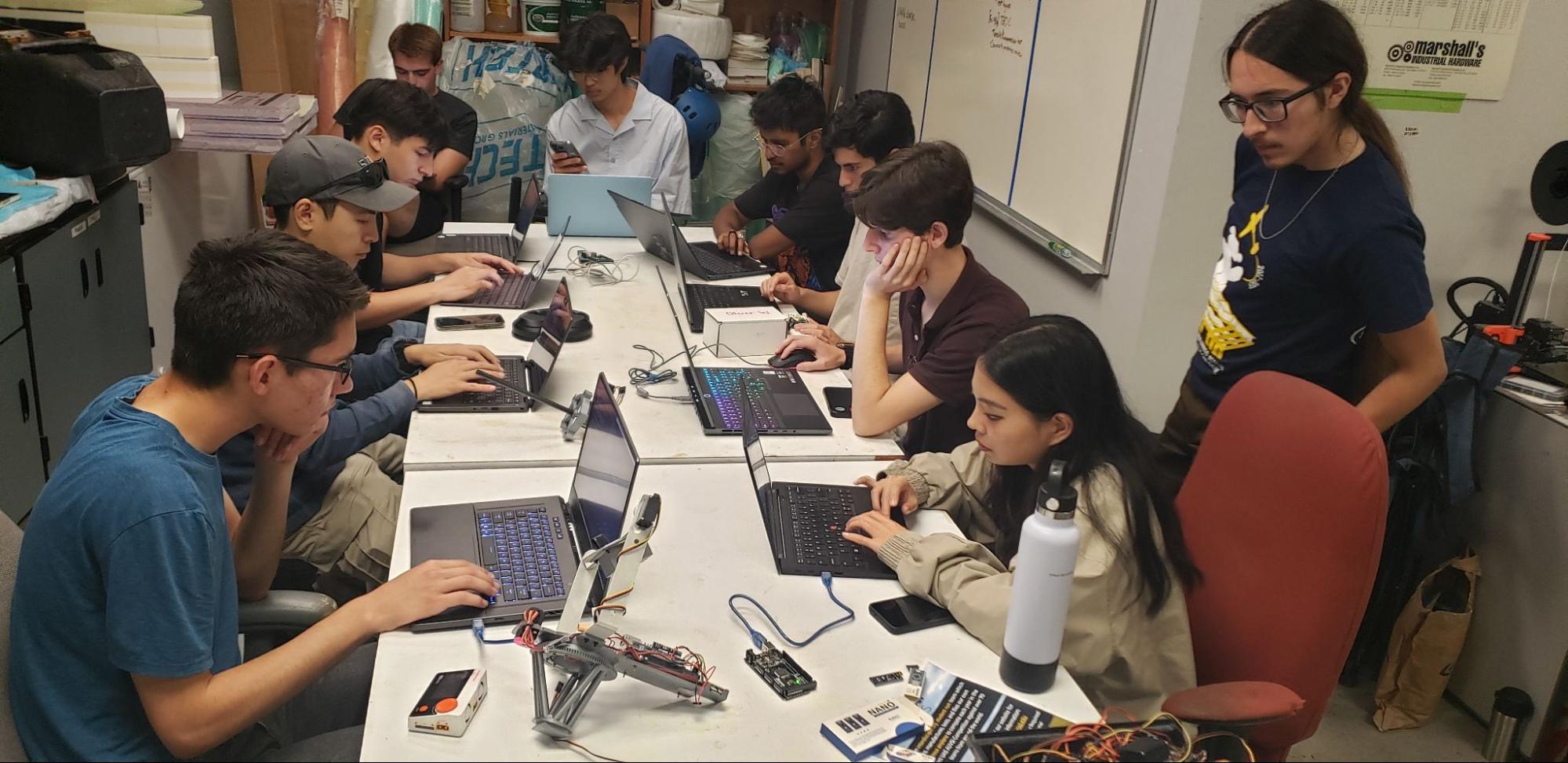
Software
Going into fall quarter, the software team had planned major projects for the entire academic year: reimplementing our onboard computer software in C++, redesigning the frontend of our ground control station in React, improving our image capturing process, and benchmarking our computer vision pipeline. In addition to these projects, we also wanted to dedicate lots of effort into onboarding new members. Towards this goal, over the summer we began writing extensive tutorials and workshops for new members to complete, which were ready by the start of the year.
Through the first five weeks of the year, we have made slow, but steady, progress on both of our main projects. Most of the infrastructural work of the onboard computer is now complete (e.g. integrating third party libraries and creating the general structure of the application), and we are nearly done mapping out the general design and feel of the new frontend webapp. As for the camera, we are in the midst of evaluating the performance of our existing camera, the LUCID Triton 200S. Previously, we encountered motion blur and poor dynamic range from our aerial photos Our current efforts are focusing on tweaking our camera parameters to improve image quality. On the computer vision side of things, we’ve focused on measuring new metrics of our object detection model and strengthening the test suite of our localization algorithms. In addition, the prepared tutorials and workshops have been integral in helping new members gain the required knowledge to contribute. Going forward, by the end of fall quarter we aim to have all of the groundwork completed for the onboard computer, all of the basic design finished for the frontend webapp, be able to consistently capture clear images from our camera and have high confidence in the performance of our computer vision pipeline.

Business
The business team has been working diligently this Fall to smooth and improve club operations and logistics. Business team members have been responsible for developing a greater social media presence, organizing events and fundraisers, finding corporate sponsors to enable the club’s engineering efforts, and making the club more inclusive and fun.
Efforts from our business team have ensured a strong financial backbone for the club through exploration of diverse funding sources including local business promotions (Tapioca Express, YogurtWorld), grants, and corporate sponsorships. The accounting and budgeting is being re-organized and business operations are constantly being smoothed out.
Perhaps most importantly, business team members have boosted morale and club engagement through hosting socials and team meetings. Our members designed new team swag such as T-shirts and stickers, and post frequently on our Instagram where we share photos of club activities.
Reflections and Going Forward
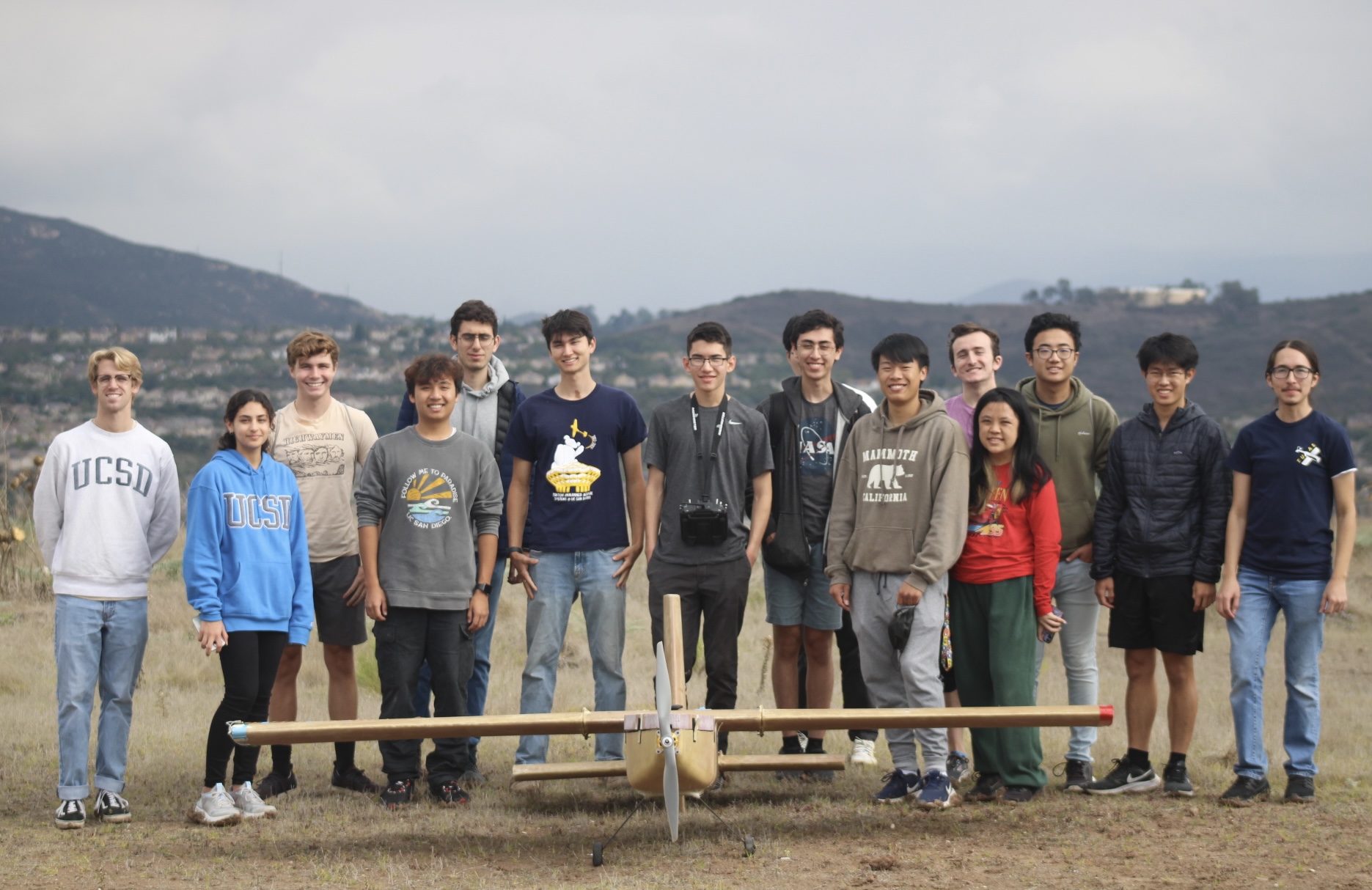
The team has been highly successful in recruiting, training, and integrating new members into the club this quarter. Through our series of workshops in each different subteam, new members from all different skill-levels and backgrounds have been able to learn and become confident engineering team members. Time spent on workshops and training for new members has not prevented us from making good progress on our flight systems development that will be critical to our final competition aircraft.
We have been making excellent, consistent progress this Fall and hitting our deadlines and goals as a team. On top of that, communication and cohesion within the club is at an all time high, leading to greater engagement and better engineering. We hope to continue these strong results throughout the remainder of the year.
Looking ahead, we may face challenges with member retention between the Fall and Winter Quarter as people’s schedules change in the new quarter and winter break creates a disconnect from usual club activities. It will also be important for us to remain diligent in hitting our goals and maintain good project management as we enter the busy development period for the competition plane in Winter. Both of these challenges can be overcome if we continue supporting an engaging club culture and encourage new members to utilize their newly acquired skills to make rapid progress on our competition aircraft.
